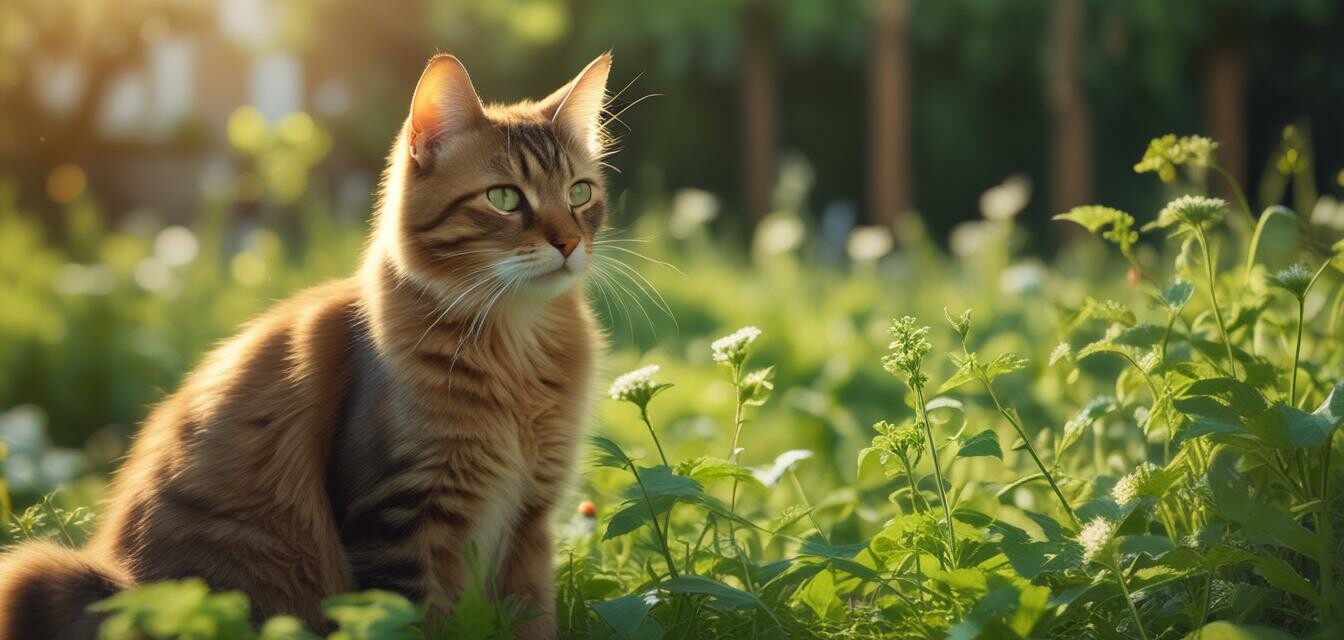
How to Grow Your Own Catnip at Home
If you're a cat owner, you may already know how much cats adore catnip. But have you ever considered growing your own? This simple guide will walk you through the steps to cultivate catnip in your backyard or even in pots. Not only will you provide endless fun for your feline friends, but you'll also tap into the lovely aromatic benefits of this versatile herb.
Key Takeaways
- Catnip is easy to grow in containers or gardens.
- It thrives in sunny spots with well-drained soil.
- Regular watering and trimming help the plant flourish.
- Harvesting catnip can be rewarding for both you and your cat.
Why grow catnip?
Catnip (Nepeta cataria) is a member of the mint family and has been praised for its pleasurable effects on cats. However, it’s not just about providing joy for your furry companion; it also has herbal applications for humans.
- It can be used to relieve insomnia and anxiety.
- Catnip tea is soothing and can help with digestion.
Getting started: Supplies you need
Before you dig in, gather the necessary supplies to ensure success:
- Catnip seeds or young plants
- Pots or garden space
- Quality potting soil
- Watering can or spray bottle
- Fertilizer (optional)
Step-by-step guide to growing catnip
1. Choose the right location
Catnip loves sunlight, so select a spot that receives 6-8 hours of direct sunlight each day.
2. Prepare the soil
Catnip thrives in well-drained soil. You can use a mix of potting soil with some sand to improve drainage. Aim for a neutral pH level (around 6.0 - 7.0).
3. Planting catnip
| Planting Method | Description |
|---|---|
| Seeds | Sow seeds about ¼ inch deep and space them about 12 inches apart. Water gently. |
| Young Plants | Plant the juvenile catnip plants into the soil, keeping them spaced about 12 inches apart. |
4. Watering and care
Water the plants regularly, keeping the soil moist but not soggy. When the plant is established, watering can be reduced. Adding a bit of fertilizer during the growing season can enhance growth.
5. Pruning and harvesting
As your catnip grows, you can prune leaves to encourage bushier growth. Once the plant starts blooming, you can harvest the leaves to use fresh or dried.
Pros
- Easy to grow and maintain
- Can be grown indoors or outdoors
- Provides endless entertainment for your cat
- Can be used for herbal teas and remedies
Cons
- May attract unwanted pests
- Can spread if planted in gardens
- Not all cats react to catnip
Common pests and diseases
While catnip is generally resistant to pests, keep an eye out for pests like aphids or whiteflies. Ensure proper care to prevent catastrophic diseases like root rot.
Caring for your catnip plant
Once your catnip is growing well, caring for it is quite simple:
- Watering: Water when the top inch of soil feels dry.
- Light: Ensure adequate sunlight exposure.
- Fertilizing: Feed with all-purpose fertilizer once or twice a year.
Using catnip
Once harvested, there are many ways to utilize your catnip:
- Make a simple catnip tea by steeping dried leaves in hot water.
- Dry leaves can be used in cat toys or sprinkled onto scratching posts.
- Use catnip as an herb in culinary dishes or for natural remedies.
- Explore other uses of catnip in our detailed guide on catnip uses.
Final thoughts
Growing catnip at home can be a rewarding endeavor, providing both joy for your cats and benefits for your own well-being. With minimal effort, you'll have a thriving supply of this delightful herb. Consider expanding your garden with other herbs as well, like mint or lavender, to create a unique and aromatic space for both you and your pets.
Tips for beginners
- Start with seeds or small plants to gain experience with growing herbs.
- Keep a watering schedule to avoid over or under-watering.
- Observe your plants regularly for growth and any pest issues.
- Experiment with growing catnip in various locations to find what suits your setup and your cat best.
Have you tried growing your own catnip? Share your experiences and tips with us!


